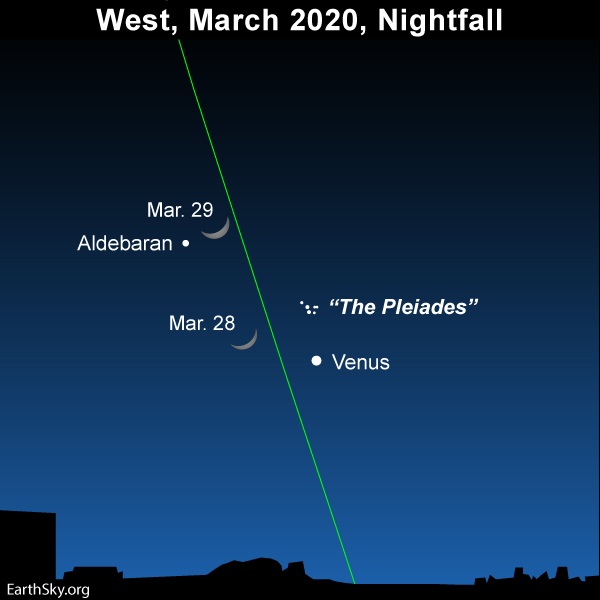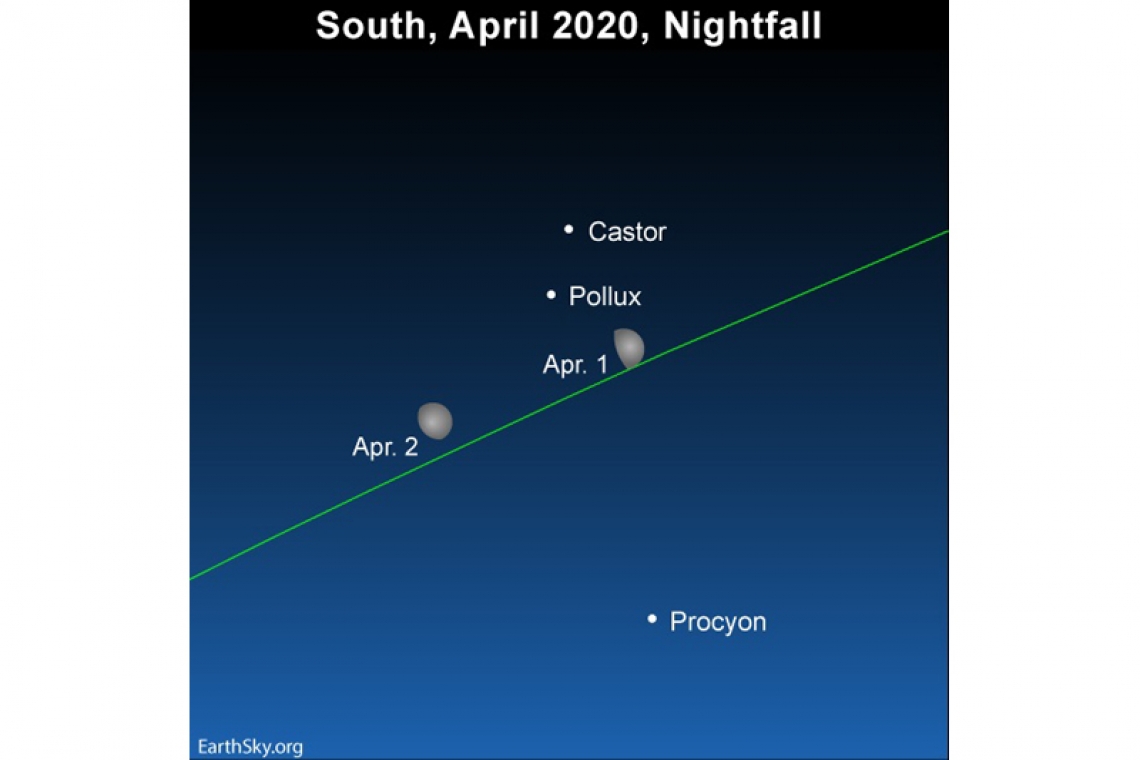~ St. Maarten’s Backyard Astronomy for Mar 28 & 29 ~
Sun rises at 6:09am
Sun sets at 6:24pm
Lunar phase: first quarter, waxing crescent
Moon rises: 8:54am, Saturday
Moon sets: 22:02pm, Saturday
This weekend enjoy a little evening delight as you gaze westward after sunset and see the waxing crescent moon and the dazzling planet Venus. The moon and Venus pop out almost immediately after sunset, they’ll be hard to miss, because the moon and Venus rank as the 2nd-brightest and 3rd-brightest bodies in our sky, the sun being the first. Unlike the stars, which shine by their own light, these two brilliant worlds shine by reflecting the light of the sun.
And you can use them to locate the constellation Taurus the Bull. First, find the moon and Venus. Then, as dusk deepens, watch for the constellation Taurus’ two major signposts to enter onto the nighttime stage: Aldebaran, Taurus’ brightest star, and the Pleiades star cluster.
The star Aldebaran depicts the Bull’s ruddy eye, and highlights a V-shaped assemblage of stars that outlines the Bull’s face. Interestingly, these stars (with the exception of Aldebaran) make up the Hyades star cluster, which are sibling stars born from the same cloud of gas and dust. Aldebaran, at a distance of 65 light-years, just happens to be on the same line of sight as this cluster. The Hyades cluster resides well over twice Aldebaran’s distance, at a distance of 150 light-years.
The waxing crescent moon is showing its horns this weekend. Her points are aiming upward like a viking helm. Although the moon appears to travel westward (in the sunset direction) every day, this is not the moon’s true motion. The moon, planets and stars appear to travel westward across the sky for the same reason that the sun appears to travel westward during the day. The Earth spins from west-to-east on its rotational axis every day, making it appear as if the sun, moon, planets and stars actually move from east to west daily. But it’s really the rotating Earth that is doing the moving.
Venus will soon be in retrograde motion, fancy words which mean that she will be moving opposite her normal direction, and against the direction of all the stars and the sun and the moon. How and why does this happen? It was a mystery ultimately solved by Copernicus in the 16th century. Before he deduced that the sun is at the center of our solar system, everyone assumed the earth was at the center. The rare but regular retrograde motion of Venus and the visible planets gave the clue to what was really going on. Imagine you are running on a track with five other runners. You are on the third lane out from the inside. As you pass ahead of the other runners, from your perspective they are moving backwards. But in truth you are all running around the track in the same direction.
Watch the Venus to pass very close to the Pleiades star cluster on April 3, 2020, and about 10 degrees north of Aldebaran in mid-April 2020. Starting on May 13, and ending on June 25, Venus will move in retrograde – after that you will find Venus in the morning sky.
Thank you for keeping up with the Night Sky articles. If you are out later on in the week, each star rises about four minutes earlier each day than written here, and the moon rises 50 minutes later. Night Sky is researched and compiled by Lisa Davis-Burnett. Earthsky.org is a key resource for information and images. Questions or comments? Email This email address is being protected from spambots. You need JavaScript enabled to view it.








